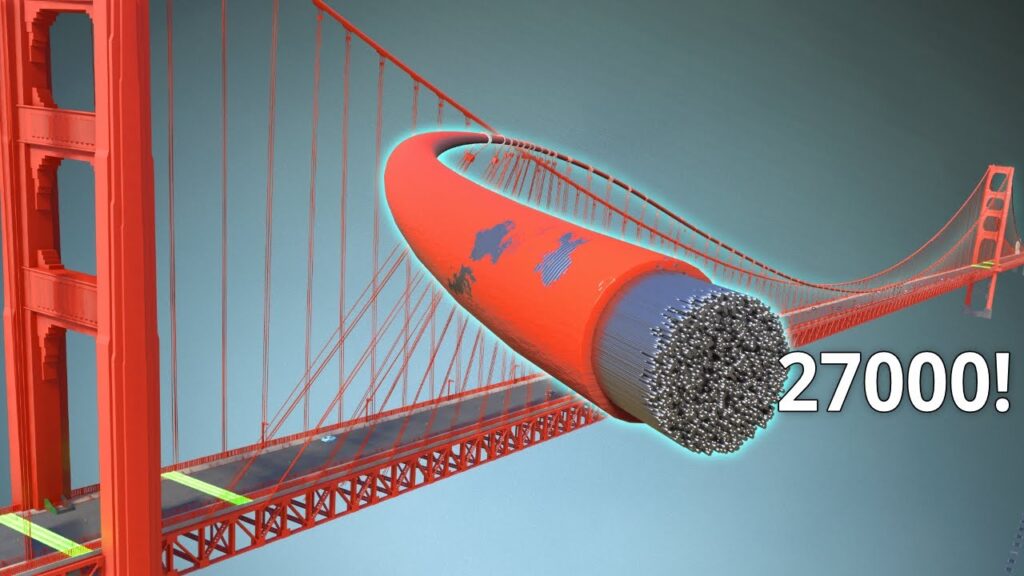
"Build­ing a sus­pen­sion bridge over the Gold­en Gate, the deep strait between San Fran­cis­co Bay and the Pacif­ic Ocean, posed for­mi­da­ble chal­lenges. The dis­tinc­tive shape we know from so many pho­tographs emerged in part from the need to anchor the bridge in such a way as to bal­ance out the mas­sive forces that would oth­er­wise bend its tow­ers inward, and the steel-on-steel con­struc­tion of its sus­penders and deck was nec­es­sary to pre­vent cat­a­stroph­ic crack for­ma­tion."
"As many as a mil­lion peo­ple crossed the Gold­en Gate Bridge on foot to cel­e­brate the 50th anniver­sary of its con­struc­tion in 1987. More than a few of them would have remem­bered San Fran­cis­co as it was before it had its most icon­ic struc­ture - and indeed, some would even remem­ber walk­ing across it once before, on its inau­gur­al "Pedes­tri­an Day" in 1937."
As many as a million people crossed the Golden Gate Bridge on foot to celebrate its 50th anniversary in 1987. Some of those walkers remembered San Francisco before the bridge and some recalled walking across the bridge on its inaugural "Pedestrian Day" in 1937. Chief design engineer Joseph Strauss and Charles Alton Ellis made a project possible that had long been assumed impossible. Building a suspension bridge over the deep Golden Gate strait posed formidable challenges. The bridge’s distinctive shape came from anchoring needs to balance massive forces, and steel-on-steel suspenders and deck construction prevented catastrophic crack formation. The deck hangs from 250 pairs of cables and each main cable consists of 27,000 steel wires wound together.
Read at Open Culture
Unable to calculate read time
Collection
[
|
...
]